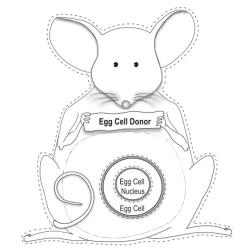Source Institutions
Source Institutions
Add to list Go to activity
Activity link broken? See if it's at the internet archive

Somatic Cell Nuclear Transfer (SCNT) is a cloning method that involves transferring a nucleus from a somatic cell of the individual to be cloned to an enucleated egg. This activity simulates, step-by-step, the Honolulu technique for SCNT used by researchers at the University of Hawaii. It allows learners to be the scientist and carry out SCNT via paper illustrations.
- 10 to 30 minutes
- 1 to 2 hours
- 1 cent - $1 per group of students
- Ages 11 - 18
- Activity, Lesson/Lesson Plan, Simulation
- English
Quick Guide
Materials List (per group of students)
- Learner Handouts (see S1 to S5 of PDF)
- Scissors
- Crayons/colored pencils/markers (blue, green, yellow, brown, and black; white - optional)
- Tape
Subjects
-
Engineering and Technology
-
Engineering
- Bioengineering/Biomedical Engineering
-
Technology
- Medical Technology
-
Engineering
-
Life Sciences
-
Cells
- Cell Structure and Function
- Cell Division
-
Diversity of Life
- Animals
-
Heredity and Genetics
- DNA Structure and Function
- Genetic Engineering
-
Cells
-
The Nature of Science
- Science as a Career
-
The Nature of Technology
-
Technology and Society
- Impacts of Technology
- Technology and History
-
Technology and Society
Informal Categories
- Animals
- Arts and Crafts
Audience
To use this activity, learners need to:
- see
- see color
- read
- touch
Learning styles supported:
- Involves teamwork and communication skills
- Involves hands-on or lab activities
Other
Components that are part of this resource:
Includes alignment to state and/or national standards:
Includes assesments for student learning:
This resource is part of:
Access Rights:
- Free access
By:
- Semadeni, Andrew ; Limson, Mel ; Stark, Louisa ; Starr, Harmony
Source Collection
- Teach.Genetics
Rights:
- All rights reserved, University of Utah, 2002
Funding Source:
- Science Education Partnership Award from the National Center for Research Resources, a component of the National Institutes of Health, 1 R25 RR16291-01
